Unlock Flavor & Reduce Waste: The Ultimate Carrot Top Pesto Recipe
Did you know that the vibrant green tops of carrots, often discarded, are not only edible but also incredibly versatile and packed with nutrients? If you’ve been throwing away those beautiful carrot greens, you’re missing out on a culinary secret that can transform your meals, save you money, and significantly reduce food waste. Imagine turning those fresh carrot tops into a delicious, aromatic pesto that rivals traditional basil pesto. This comprehensive guide will show you how to do just that, offering an easy-to-follow carrot leaves recipe that’s both flavorful and sustainable.

“We are loving this pesto!!! It really does taste a lot like basil pesto. It froze very well. I’m looking forward to trying more of your recipes.”
– Barb
In a world increasingly conscious of sustainability and mindful eating, embracing every part of our produce is more relevant than ever. This approach not only helps the planet but also empowers you to create delicious, resourceful meals right from your kitchen. Utilizing carrot greens is a perfect example of how simple culinary adjustments can lead to significant benefits. Join us as we explore the wonders of carrot tops and transform them into a gourmet experience.
The Undiscovered Gem: Why Carrot Greens Matter
My culinary journey has always been guided by a philosophy of making the most out of every ingredient. Through periods of tight budgets, I’ve discovered that resourceful cooking is not just about saving money; it’s about appreciating food, minimizing waste, and maximizing flavor. This means meticulous meal planning to prevent spoilage and creatively repurposing food scraps that would otherwise end up in the bin.
For instance, after roasting a whole chicken, I always make sure to simmer the carcass into a rich, nourishing bone broth, extracting every last bit of goodness. Under-ripe or bruised pears? They’re destined to become a delightful homemade pear sauce. And when I bring home a bunch of carrots with their beautiful green tops still attached, my first thought isn’t to chop them off and discard them – it’s to transform them into something truly special.
This commitment to zero-waste cooking is where carrot greens shine. Often overlooked, these leafy tops are a treasure trove of flavor and nutrition, waiting to be discovered. By embracing them, you’re not just making a meal; you’re making a statement against food waste, contributing to a more sustainable lifestyle, and enriching your diet with overlooked ingredients. It’s a small change with a big impact, both on your plate and on the environment.
Nutritional Powerhouse: The Benefits of Carrot Tops
That’s right, carrot greens are completely edible and surprisingly nutritious. While they possess a distinctive bitter edge, similar to strong parsley or cilantro, a simple blanching process can mellow their intensity, making them a fantastic addition to various dishes. Interestingly, radish tops can be prepared and utilized in much the same way, opening up even more possibilities for creative, waste-reducing cooking.
Beyond their unique flavor, carrot leaves boast an impressive nutritional profile. They are a good source of vitamins, including Vitamin C and Vitamin K, and provide essential minerals like potassium and calcium. Moreover, they contain beneficial antioxidants and chlorophyll, which contribute to their vibrant green color and overall health-promoting properties. Incorporating these greens into your diet is a simple yet effective way to boost your nutrient intake with ingredients you already have on hand.
This article specifically offers a wonderfully tasty carrot leaves recipe for pesto. This pesto is not only incredibly flavorful but also freezes exceptionally well, making it perfect for batch cooking and ensuring you always have a vibrant flavor enhancer at your fingertips. Imagine having a ready-to-use ingredient that can elevate pasta dishes, add a fresh zing to roasted vegetables, serve as a delightful dressing for salads, or even transform a simple grilled cheese sandwich into a gourmet experience. You’ll be amazed at the depth of flavor and how much this homemade carrot top pesto enhances your culinary creations!

🥕 The Ultimate Carrot Leaves Pesto Recipe
This carrot greens recipe for carrot top pesto is my go-to solution for utilizing carrot leaves effectively and deliciously. It’s a simple yet sophisticated way to prevent food waste while creating a vibrant, nutrient-rich condiment. Here are the essential ingredients you’ll need to embark on this flavorful journey:
Ingredients for Your Delicious Carrot Green Pesto
- 2 cups carrot leaves, chopped small (ensure you remove the thickest, toughest stems; this quantity is typically what you’d get from one standard bunch of carrots)
- 2 cloves garlic, finely chopped (fresh garlic is key for optimal flavor!)
- ¼ cup pine nuts (for a different flavor profile or if pine nuts are unavailable, walnuts make an excellent substitute)
- ½ cup extra virgin olive oil (a good quality oil will make a significant difference in taste and texture)
- ¼ cup grated Parmesan cheese (freshly grated is always best, but pre-grated works too)
- Black pepper, to taste (start with a pinch and adjust; for an exciting kick, consider adding a dash of red pepper flakes)
You’ll find a printable recipe card with all details further down the page!

When you purchase carrots with their greens attached, it’s advisable to use the fresh carrot greens as soon as possible. They are highly perishable and tend to wilt quickly, losing their crispness and vibrant color. Proper storage in the refrigerator can extend their freshness for a few days, but for the best pesto, aim for greens that are still lively and bright.
Step-by-Step Guide to Crafting Carrot Top Pesto
Creating this delicious carrot top pesto is a straightforward process that yields incredibly rewarding results. Follow these step-by-step instructions to prepare your carrot greens and transform them into a gourmet delight:
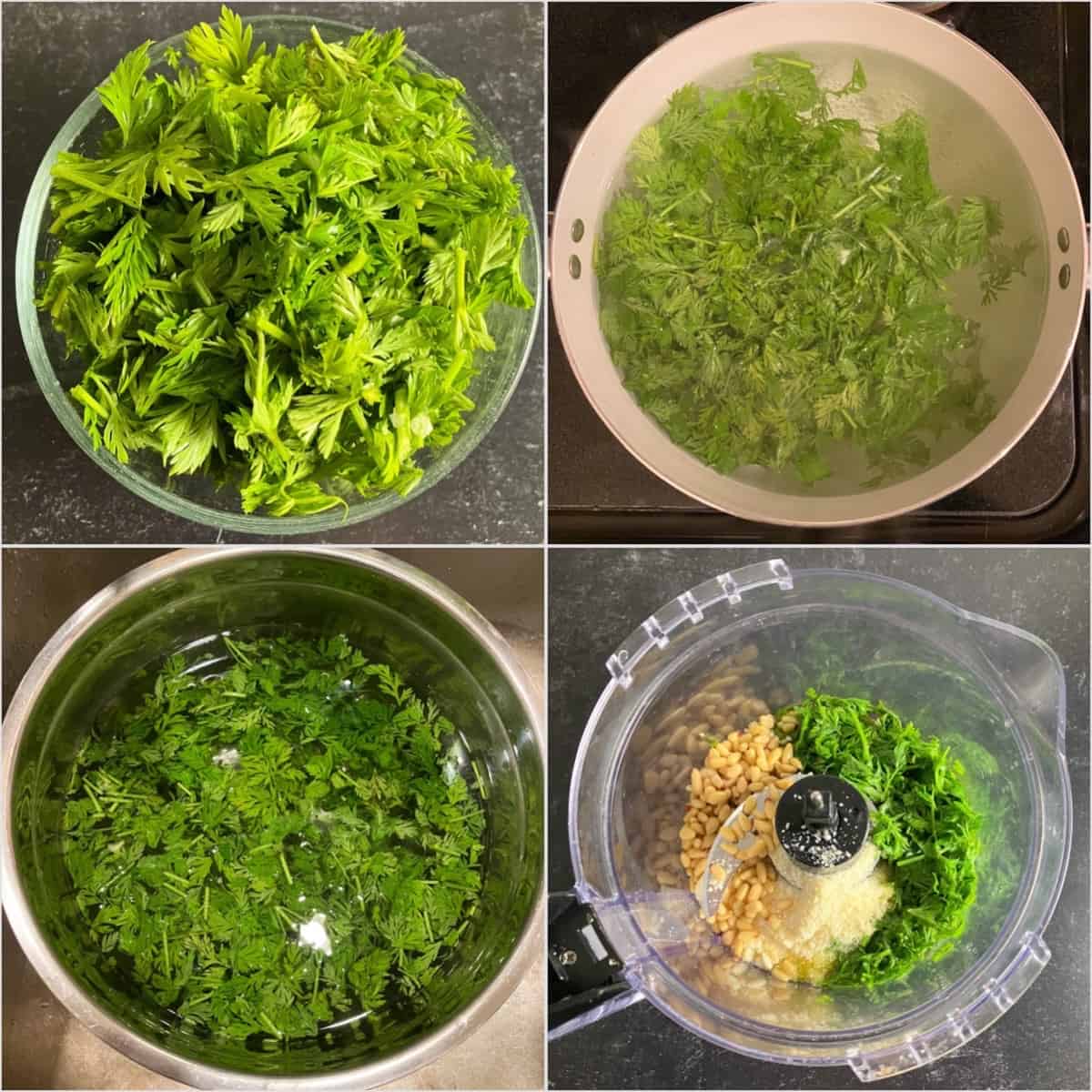
Blanch the Carrot Leaves: Begin by setting a pot of water to boil. While the water heats, prepare your carrot leaves by thoroughly rinsing them under cold water. Trim away any tough, thick stems and chop the greens into smaller, manageable pieces. Once the water reaches a rolling boil, carefully add the cleaned and chopped carrot leaves. Let them cook for just 1-2 minutes. This brief blanching step is crucial, as it helps to reduce the natural bitterness of the greens and brightens their color, making the pesto more palatable.
Shock and Drain: As soon as the blanching time is up, quickly drain the carrot leaves using a colander. Immediately plunge them into a bowl of ice-cold water. This “shocking” process rapidly stops the cooking, preserves their vibrant green color, and helps lock in nutrients. Once cooled, drain the carrot greens again, squeezing out as much excess water as possible. This step is vital for preventing a watery pesto. Transfer the blanched and drained greens into the bowl of a food processor.
Blend to Perfection: Add the remaining ingredients – chopped garlic, pine nuts (or walnuts), extra virgin olive oil, grated Parmesan cheese, and black pepper (or red pepper flakes) – to the food processor with the blanched carrot greens. Pulse and blend until the pesto reaches your desired texture. Some prefer a coarser, rustic pesto, while others prefer it smoother. You may need to pause the processor occasionally and scrape down the sides with a spatula to ensure all ingredients are evenly incorporated and blended.
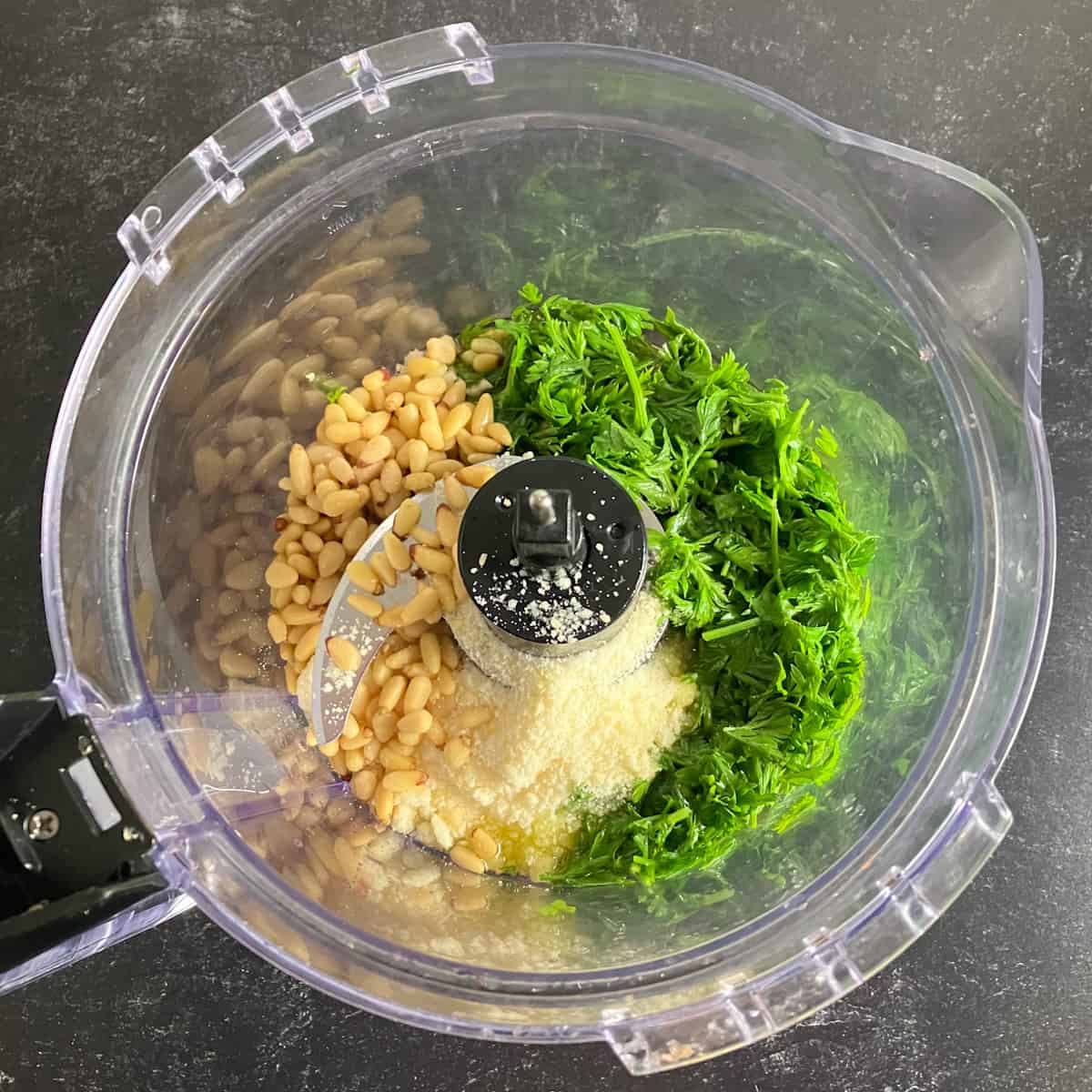
Serve and Enjoy: Your vibrant, homemade carrot green pesto is now ready! Serve this flavorful creation over your favorite pasta, use it as a robust spread for sandwiches, a topping for bruschetta, or an accompaniment to grilled meats and vegetables. You’ll be delightfully surprised at how much this innovative pesto tastes like its basil counterpart, offering a fresh, earthy twist. This is truly my favorite answer to how to eat carrot leaves, proving that waste can be wonderfully delicious!
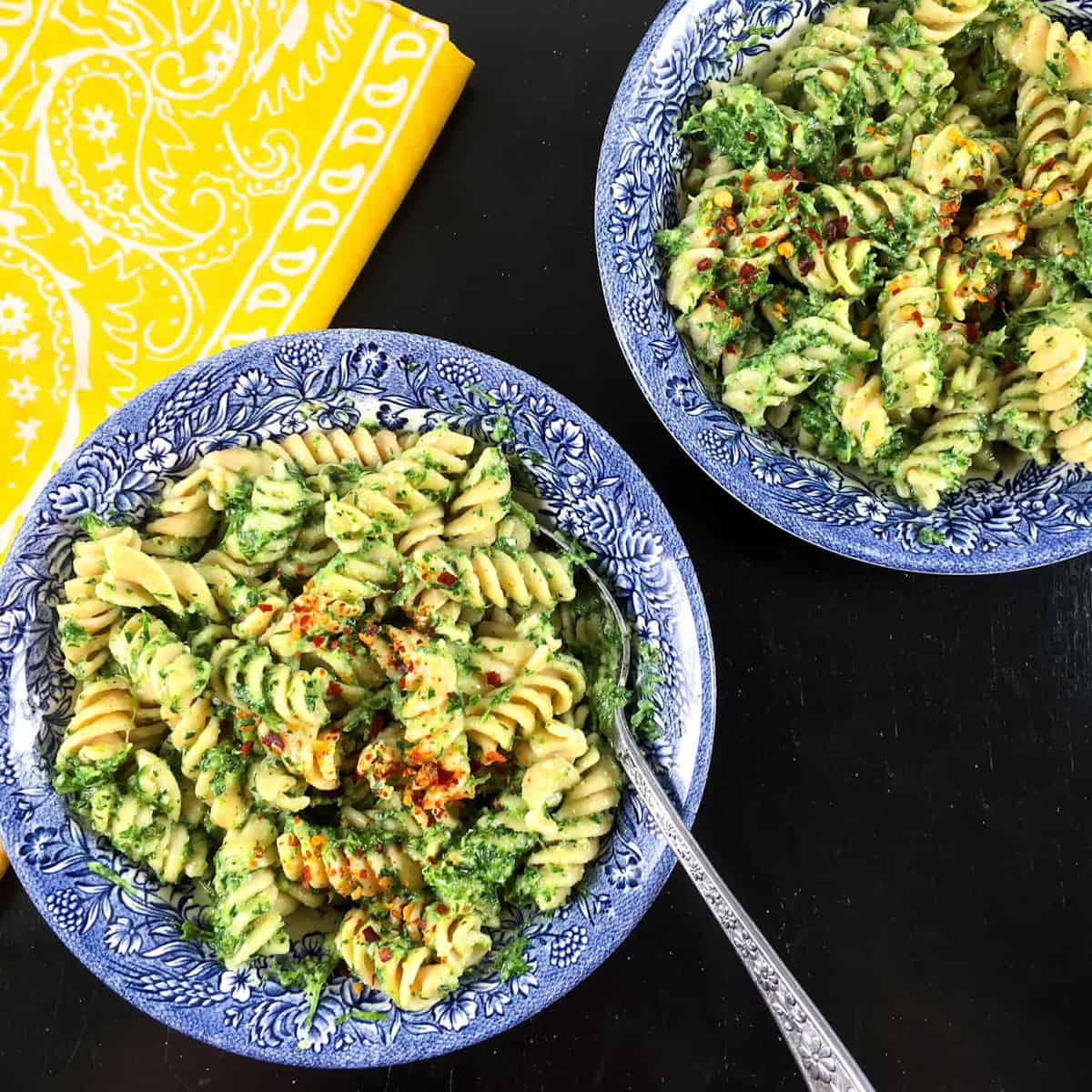
👨🍳 Beyond Pesto: Creative Ways to Enjoy Carrot Greens
While carrot top pesto is undeniably delicious, it’s just one of many fantastic answers to the question: what to do with carrot greens? These versatile greens can be incorporated into a wide variety of dishes, adding a fresh, earthy, and slightly bitter note that complements many cuisines. Don’t let any of those nutritious carrot tops go to waste! Explore these other delightful carrot greens recipes:
- Carrot Greens in Soup: Add chopped carrot greens to your favorite vegetable or chicken soup for an extra layer of flavor and nutrition. They can contribute a peppery, slightly bitter note, similar to parsley or celery leaves, and hold up well during cooking.
- Carrot Top Chimichurri Sauce: This vibrant, zesty Argentinian sauce is traditionally made with parsley, but carrot greens make a fantastic substitute. Blend them with garlic, olive oil, vinegar, and spices for a pungent, herbaceous sauce that’s perfect for grilled meats, roasted vegetables, or as a flavorful vegan dip.
- Carrot Greens Salad: For a super refreshing and nutritious side dish, combine tender, blanched carrot greens with other fresh salad ingredients. Their unique flavor pairs wonderfully with a light vinaigrette, sesame seeds, and perhaps some toasted nuts for crunch.
- Carrot Leaves Chutney: Explore an exciting Indian twist by turning carrot greens into a flavorful chutney. This vibrant condiment, often paired with savory fritters or used as a spread, brings a delightful balance of spicy, tangy, and herbaceous notes.
Beyond these specific recipes, carrot greens are also excellent for enriching homemade vegetable stock or vegetable broth, adding depth and a subtle earthy essence. For a quick nutritional boost, toss a handful into your morning smoothie – their bitterness is easily masked by fruits and other greens. The options for creative carrot top recipes are truly endless, limited only by your imagination!
Have you ever experimented with eating carrot tops before? If so, what are some of your favorite and most innovative ways to use them in your cooking? Whether this concept of using carrot leaves is a familiar practice or a brand-new discovery for you, I sincerely hope you’ll adore this delicious and sustainable carrot leaves recipe for pesto!
Watch How to Make It!
Click here to watch the recipe video!
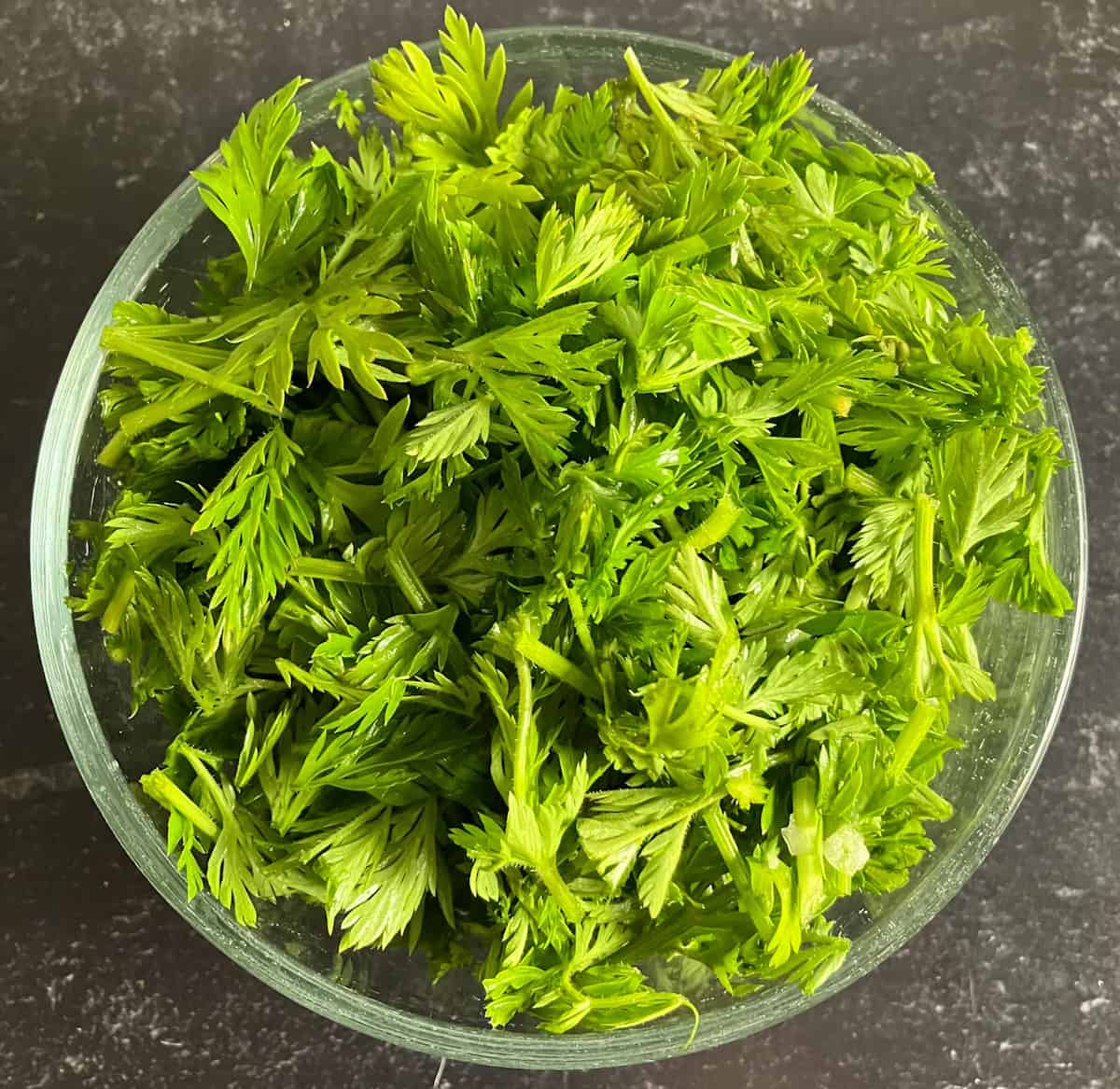
Carrot Leaves Pesto Recipe (What to do with Carrot Greens)
By Summer Yule
Save those fresh carrot tops and try this carrot leaves recipe for delicious pesto. You’ll save money, help prevent food waste, and have something tasty to show for your efforts!
📌Pin Recipe
Ingredients
- 2 cups carrot leaves, chopped small (remove thickest stems; this is approximately the amount from one bunch of carrots)
- 2 cloves garlic, finely chopped
- ¼ cup pine nuts
- ½ cup extra virgin olive oil
- ¼ cup grated Parmesan cheese
- black pepper, to taste
Instructions
- Set a pot of water to boil. Once boiling, add the carrot leaves and let cook for 1-2 minutes.
- After the time is up, quickly drain the carrot leaves and plunge them into ice-cold water to stop the cooking process. Drain the carrot greens again and put the greens into a food processor. (This blanching process helps to remove some of the bitterness from the greens.)
- Add the rest of the ingredients to the food processor. Blend until the pesto achieves the desired texture. You may need to stop the processor and scrape down the sides with a spatula if food is sticking to the sides.
- Enjoy! We were surprised at how much this tastes like basil pesto!
Equipment
- Food Processor
Notes
💭 Expert Tips from Dietitian Summer Yule
This is a level 3 recipe (weight maintenance and active lifestyles). This recipe makes seven servings that are approximately 2 tablespoons each. Leftovers can be frozen in individual servings in an ice cube tray and then stored in freezer bags in the freezer.
Pesto is a high-calorie condiment that has a lot of added oil in the form of olive oil. Because of this, I don’t consider it one of the best ways to flavor your food if you have a weight loss goal. It’s typically added to lower-protein dishes such as pasta, where it may not promote satiety. (Tip: try it on a legume-based pasta for additional protein or a gluten free option.)
That said, pesto is packed with heart-healthy ingredients that are mainstays in the Mediterranean diet. Just because a food is high-calorie does necessarily mean it is less healthy! Adding this pesto to meals can be a great way to give your meal an energy boost if you need it.
Nutrition information is for one serving.
nutrition info disclaimer
All recipes on this website may or may not be appropriate for you, depending on your medical needs and personal preferences. Consult with a registered dietitian or your physician if you need help determining the dietary pattern that may be best for you.
The nutrition information is an estimate provided as a courtesy. It will differ depending on the specific brands and ingredients that you use. Calorie information on food labels may be inaccurate, so please don’t sweat the numbers too much.
“To taste” means to your preferences, which may have to be visual to follow food safety rules. Please don’t eat undercooked food x
Nutrition
Calories: 189kcal
Carbohydrates: 2.1g
Protein: 2.3g
Fat: 20g
Saturated Fat: 3.1g
Sodium: 41.4mg
Potassium: 124.8mg
Fiber: 0.8g
Vitamin A: 28.9% DV
Vitamin C: 38.6% DV
Calcium: 2.8% DV
Iron: 5% DV
Frequently Asked Questions (FAQs) About Carrot Greens
Curious to learn more about carrot greens? Here are some common questions and detailed answers to help you make the most of this often-underestimated ingredient:
What do carrot greens taste like?
Carrot greens possess a distinctive flavor profile that is often described as slightly bitter, earthy, and herbaceous, with notes reminiscent of parsley or cilantro. Their taste can also carry a faint carrot-like sweetness, especially when young and tender. Blanching, as demonstrated in our pesto recipe, significantly mellows this bitterness, making them more palatable and versatile for various culinary applications.
What are carrot leaves called?
Carrot leaves are commonly referred to as carrot tops or carrot greens. These terms are used interchangeably to describe the green, leafy foliage that grows above the carrot root.
Are carrot tops poisonous?
No, carrot greens are absolutely not poisonous. There’s a common misconception that they are due to the presence of naturally occurring alkaloids, which are also found in other widely consumed plants like celery and parsley. These compounds are not toxic in typical culinary amounts. However, like with any food, excessive consumption could potentially lead to mild gastrointestinal discomfort or, rarely, allergic reactions in sensitive individuals. Enjoying them in moderation as part of a balanced diet is perfectly safe.
What are carrot leaves benefits?
Carrot leaves offer several nutritional benefits. They are a good source of various vitamins and minerals, including Vitamin C (an antioxidant that supports immune health), Vitamin K (important for blood clotting and bone health), and potassium. They also contain chlorophyll and a range of antioxidants, contributing to overall well-being. While typically consumed in smaller quantities as an herb or flavor enhancer rather than a main vegetable, their inclusion can still add valuable nutrients to your diet.
Can I freeze carrot leaves?
Yes, you can absolutely freeze carrot leaves to preserve them for later use! While their texture might soften slightly upon thawing, their flavor and nutritional value will remain largely intact. For best results, it’s highly recommended to blanch them briefly before freezing – just as we do for our pesto recipe. This helps to lock in their vibrant color and fresh flavor, preventing freezer burn and maintaining their quality for longer storage. After blanching, pat them dry, chop them, and freeze them in airtight bags or containers.
Can you use carrot leaves instead of parsley?
Carrot leaves can indeed be used as an effective substitute for parsley in many dishes. They share a similar fresh, herbaceous aroma, making them suitable for garnishes, sauces, and cooked dishes where parsley is typically used. However, keep in mind that carrot greens tend to have a slightly stronger, more bitter flavor than parsley. It’s wise to start with a smaller quantity and adjust to your taste preferences to avoid overpowering the dish.
Is it OK to juice carrot greens?
While it’s technically possible to juice carrot greens, it’s not as common as juicing the carrot root itself. Their potent, somewhat bitter flavor can be quite intense in a concentrated juice, so moderation is key. If you choose to juice them, it’s best to combine them with sweeter fruits and vegetables (like apples, oranges, or the carrot roots themselves) to balance the taste. Start with a small amount and adjust to your liking.
Can I dry carrot leaves?
Yes, you can certainly dry carrot leaves to create your own homemade dried herb. This is a fantastic way to preserve their flavor for long-term use. You can air-dry them by hanging small bunches upside down in a clean, well-ventilated area away from direct sunlight. Alternatively, a food dehydrator or a low oven setting can speed up the process. Once completely dry and brittle, crush them into flakes and store them in an airtight container. Dried carrot leaves can be used in soups, stews, marinades, or even steeped to make a herbal tea.
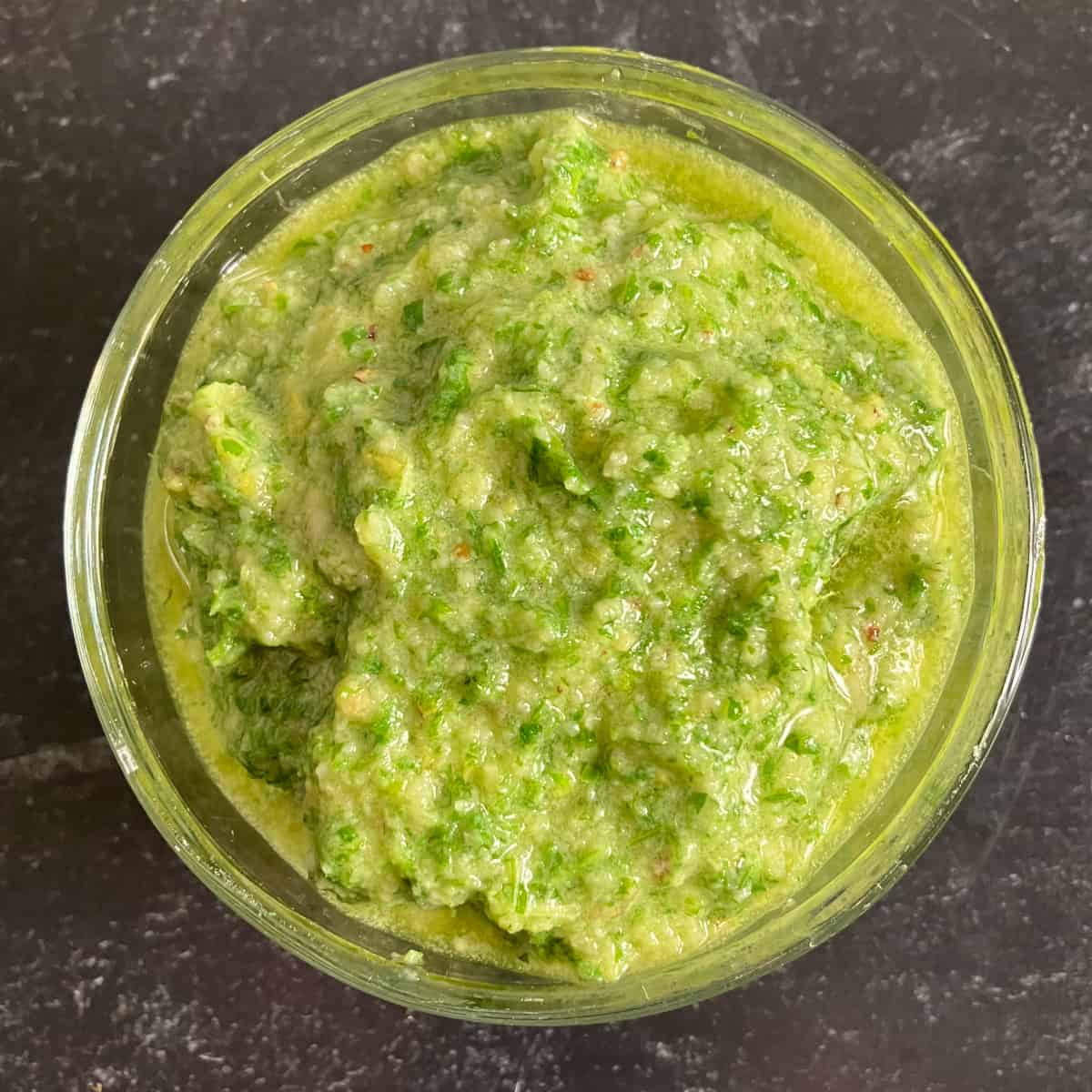
Join our community! Subscribe for all of the latest and greatest recipes, and follow me on Facebook, Pinterest, Instagram, and YouTube!
